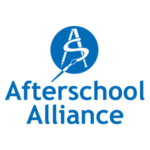General Research
To help students meet rigorous course standards in academic and career/technical classrooms, each teacher must establish and maintain a learning environment that supports and motivates students to do their personal best. Classroom management is so much more than a set of appropriate rules and consequences. There is a skill set of strategies that teachers and principals can use to create focused and productive classrooms that help students achieve higher levels of performance. Principals and teachers can implement self-assessment and staff development programs built around the following 10 strategies.
Southeast Regional Education Board (SREB)
By Eric Schaps and Daniel Solomon
Published in The Journal of Primary Prevention, Vol. 23, No. 3, Spring 2003.
Correlation and intervention studies of school environmental factors associated with student drug use and prevention are summarized. Major factors that emerge in the correlational studies are school supportiveness, sense of community, and opportunities for students to interact and to exert influence. Similar factors are involved in the intervention studies, with the development of a sense of community and attachment to school central, although the means by which these are approached differ across projects. A common conclusion seems to be that a supportive environment increases students’ attachment to school and thereby their inclination to abide by the school’s norms and values.
With the Harvard School of Public Health and support from the Charles Stewart Mott Foundation and the Atlantic Philanthropies, the Afterschool Alliance initiated the Roadmap to Afterschool for All, a scientific study that for the first time assesses the current investment in afterschool programs from the public sector, parents, foundations and businesses, and estimates the additional investment needed from each sector to provide quality afterschool programs for all children. The research shows that parents are paying the lions share of afterschool costs, even among programs serving high poverty children, and that funding of all types is insufficient.
This toolkit was developed in partnership with the New England Network for Child, Youth, & Family Services, Social Policy Research Associates and the University of Kentucky Department of Community and Leadership Development. This practical, easy-to-follow tool kit is designed for adult and youth staff at youth development and youth civic engagement organizations. It guides readers as they assess their organizational needs for evaluations, design evaluations to fit their organizational goals, and use evaluation data to report to funders and other community stakeholders.
National Center for Community Education (NCCE). This guide organizes resources into six areas necessary for the successful operation of after-school programs: Management, Communication, Programming, Integrating K-12 and After-School Programs, Community Building/ Collaboration, and Evaluation. The resources complement the training curricula developed by the NCCE Training Task Force for 21st Century Community Learning Centers.
This brief illustrates several benefits of after school programs, such as improved literacy skills, enjoyment of recreational reading, and building positive relationships with adults, which reading activities in afterschool can offer to participants.
by Eric Schaps
Published in Perspective, Journal of the Association of YMCA Professionals, October 2005.
Eric Schaps discusses how to improve afterschool programs by building a sense of community with schools. He discusses the importance of community building, creating safe and fun spaces for students, and integrating academic and social skills into activities.
This report is the tenth in a series of annual publications produced jointly by the National Center for Education Statistics (NCES), Institute of Education Sciences (IES), in the U.S. Department of Education, and the Bureau of Justice Statistics (BJS) in the U.S. Department of Justice. The indicators in this report are based on information drawn from a variety of data sources, including national surveys of students, teachers, and principals.
A 2005 report on how states are addressing the federal failure to fully fund afterschool programs.
This guide is designed to provide policy makers, program leaders, system building advocates and other with practical information on creating and maintaining public-private partnerships
We call on all federal, state, and local officials to implement this four-part plan to cut crime and violence. Doing so will help America’s children learn the values and skills they’ll need to become good neighbors and responsible adults. Across all ages there are effective programs. Some start before birth, others are proven to work with older kids, even serious juvenile offenders. While no plan can prevent every violent act, this common-sense approach, based on our experience and the latest research about what really works, can make all of us safer.
This brief illustrates the needs of children in high-risk families and neighborhoods for quality after school programs.










